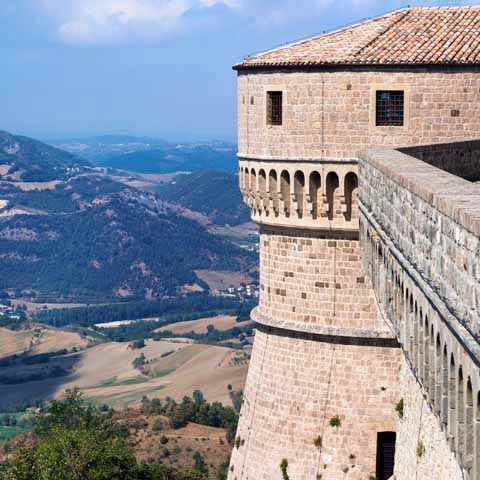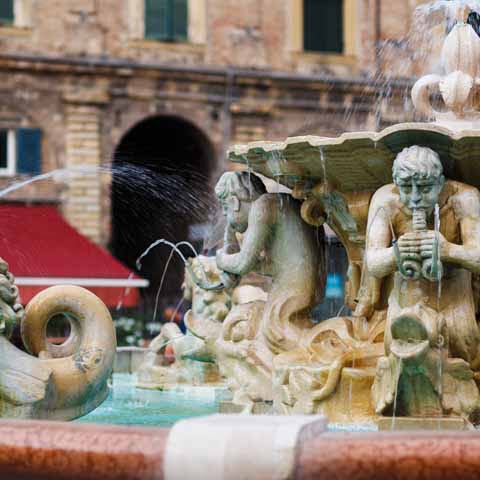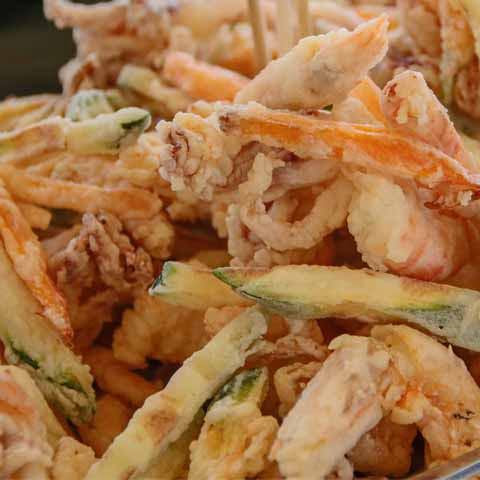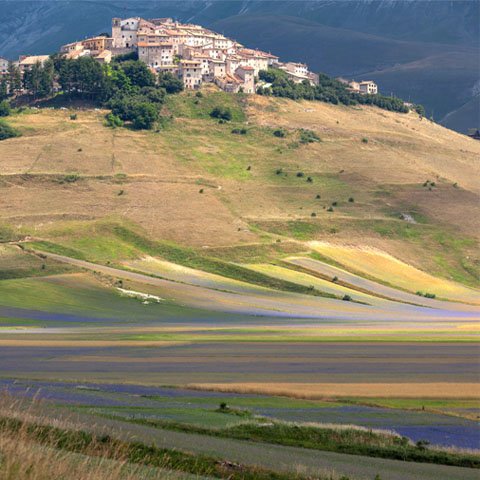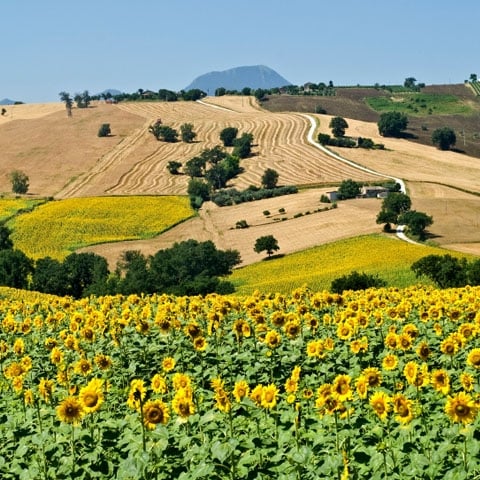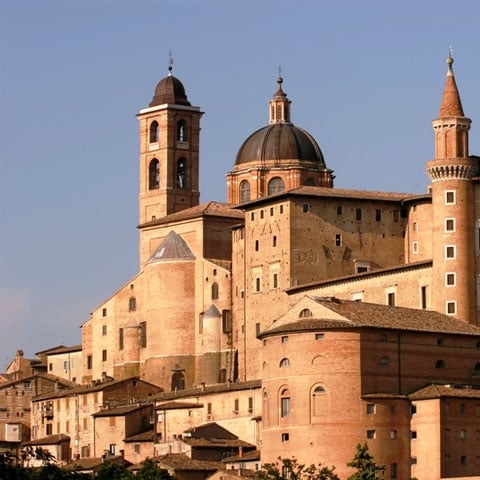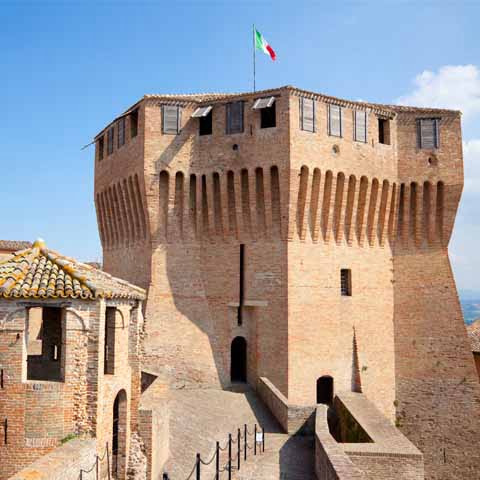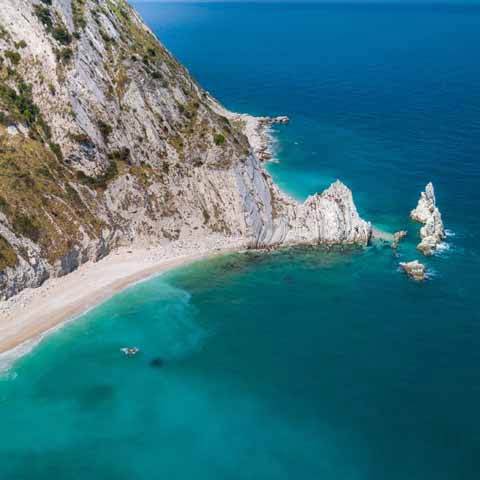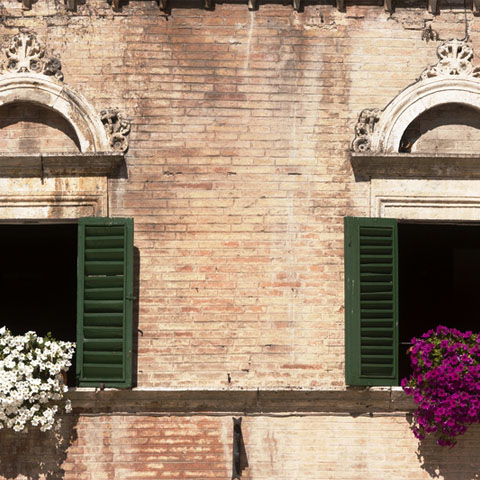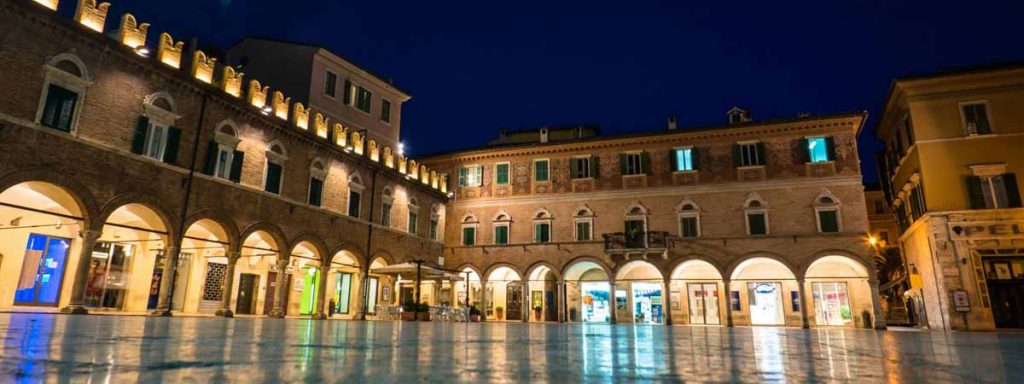In the heart of the eastern coast of Italy lies Marche, a land of diverse landscape, long standing traditions, and rich culture. The name of the region itself is an example of its deep cultural roots. In the Middle Ages, a border province of the Holy Roman Empire called a “march” was an unsettled frontier held by one of the Emperor’s fighting barons called “marchesati.” Today, The Marches or Marche refer to a region of Italy that combines three early frontiers called Marca di Fano, Marca di Camerino, and Marca di Ancona.
With much of the region covered in rolling green hills and some mountains, it is often underestimated by both tourists and locals in terms of its cultural heritage. Marche has more than one thousand important monuments and historic castles, three hundred libraries, and other key architectural phenomena in the form of piazzas, cathedrals, abbeys, sanctuaries, and theaters. All these elements come together to make the region somewhat of an open-air museum that is highly appealing to its visitors.
Between the gorgeous local architecture and amazing natural wonders, there is no shortage of things to do in Marche. Whether you intend to go truffle hunting in the forest, explore exotic sea caves, or walk the walls of ancient fairytale castles, there is something for everyone.
Marche’s cuisine is considered atypical to the Italian dishes typically found throughout Italy as it combines its natural heritage with influences of Tuscany, Lazio, and Emilia Romagna. This unique blend yields a delicious and generous cuisine that is considered to be one of the best kept secrets of Italy.
Home to more than 1.5 million inhabitants, the region has a density of population below the national average. That said, the population has increased incrementally over the past twenty-five years. This is attributed to the fact that Marche offers residents a high quality of life, including good cost of living rates and public services.
GEOGRAPHY
Located on the eastern central side of Italy, Marche has five provinces including Ancona, which is the region capital, Ascoli Piceno, Fermo, Macerata, and Pesaro e Urbino. There are no plains of note in this region, with more than sixty percent of its territories sitting atop rolling hills, and the remainder of the area being mountainous, with the exception of the picturesque coastline which faces the Adriatic Sea.
The eastern coast is comprised of primarily golden sandy beaches except for one part of the coast that is uniquely rocky, where the mountains literally touch the edge of the sea. The Apennine Mountains cover much of the western portion of the region, which is home to the famous Monti Sibillini and the highest mountain at more than eight thousand feet, Mount Vettore.
Whereas some of Italy’s regions boast of long, flowing rivers, much of Marche is covered in streams that largely exist because of melted mountain snow and rain accumulations. The Nera is an important tributary of Tevere. The northern Marecchia and southern Tronto streams are known for their lush valley which forms a natural border with other regions.
Coastal weather is largely Mediterranean, although not as warm as that of coastlines bordering the Tyrrhenian Sea. In fact, the Adriatic Sea on the region’s eastern border and its close positioning to the Balkans are a prominent factor in the arrival of the cold winds of autumn and snowflakes of winter. The mountainous part of Marche is mild in summer and spring, rainy in the fall, and snowy in the winter, particularly over the Apennines.
WHEN IN MARCHE
While the mountains offer a number of hidden treasures including unique rock formations and amazing hiking opportunities, an unparalleled experience of the region is that of Mount Sibillini. The natural wonders of this land form a strong bond between the people and nature that carries over into local culture and traditions. Marche is one of the greenest regions of Italy, including areas such as the National park of Monti Sibillini. The park offers outstanding opportunities for hiking and trekking, but birdwatching is often the main attraction. Attentive birdwatchers can catch a glimpse of the Royal Eagle, the Royal Owl, and the peregrine falcon.
The rolling hillsides of Marche make it prime ground for local vineyards. The region is considered today to be one of the fastest growing areas for wine production and wine sales. No trip to Marche is complete without a tour of some of the local vineyards and a sampling of some of the region’s premier red and white wines, such as Rosso Conero, Rosso Piceno, and Verdicchio.
For those hoping to combine their love of nature with the coastline, the caves at Frasassi, just 50 miles southwest of Ancona, are a must see. The network of Genga sea caves, also known as Grotte di Frasassi, is the largest in Europe. A tour of these cave systems offer impressive views of stalactites and stalagmites found along nearly a mile of accessible caverns.
A first stop for many visiting Marche is the lively university town of Urbino. The town’s historic center is aesthetically incredible with the Palazzo Ducale as the shining star. The building is one of the most important monuments in Italy and thus was established as a United Nations Educational, Scientific and Cultural Organization (UNESCO) World Heritage site in 1998. Palazzo Ducale represents a pinnacle of Renaissance art and architecture that adapts seamlessly to its physical site and to its medieval precursor in an extraordinary manner.
The warm people, stunning natural scenery, and delicious cuisine make visiting Marche in any season a fabulous Italian vacation for the whole family.
